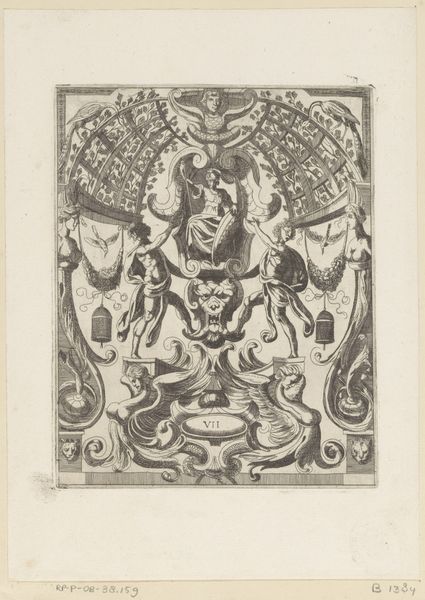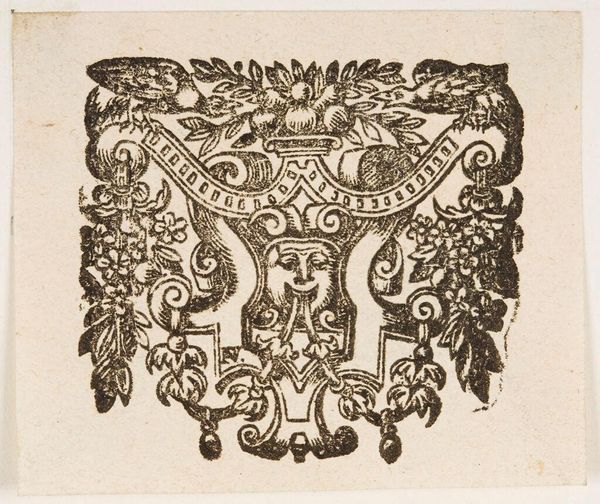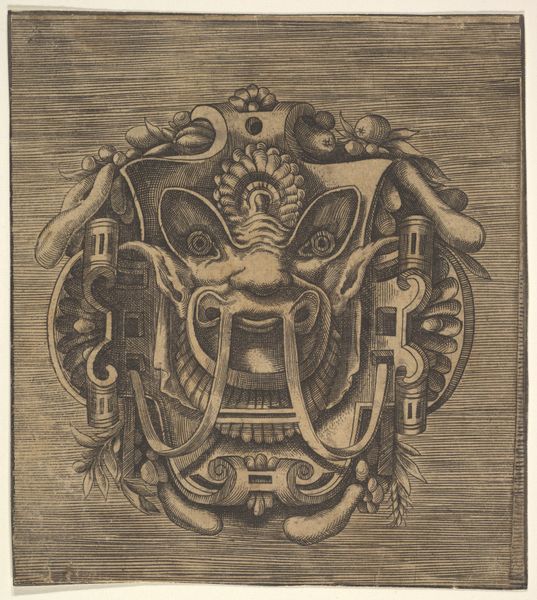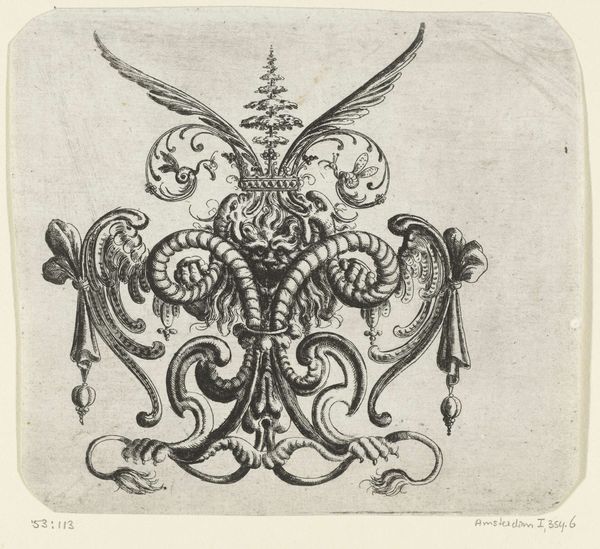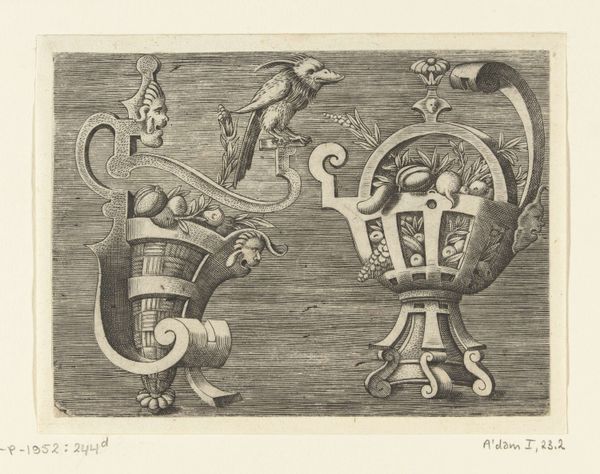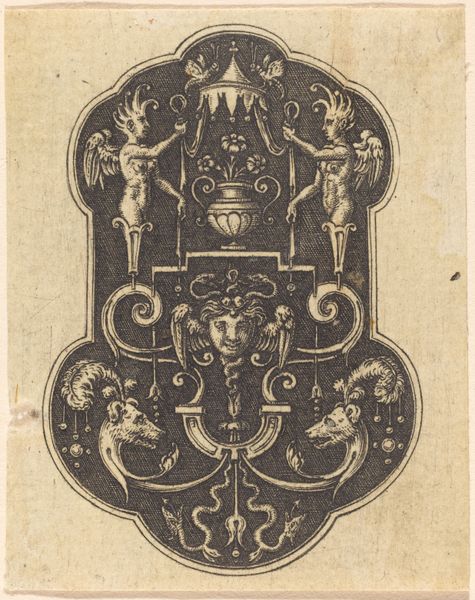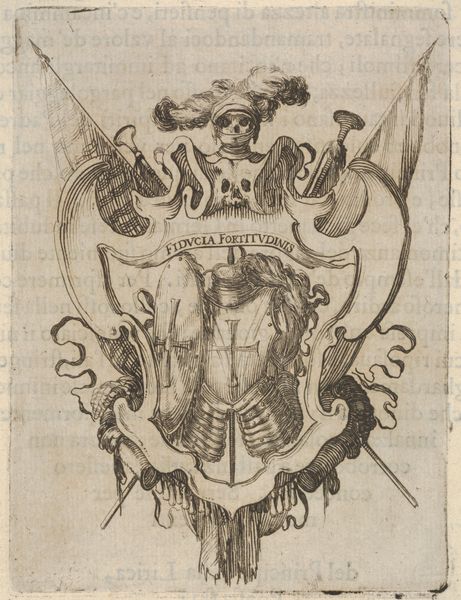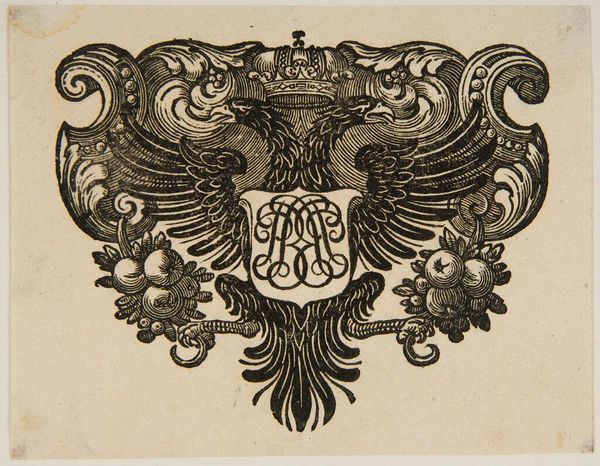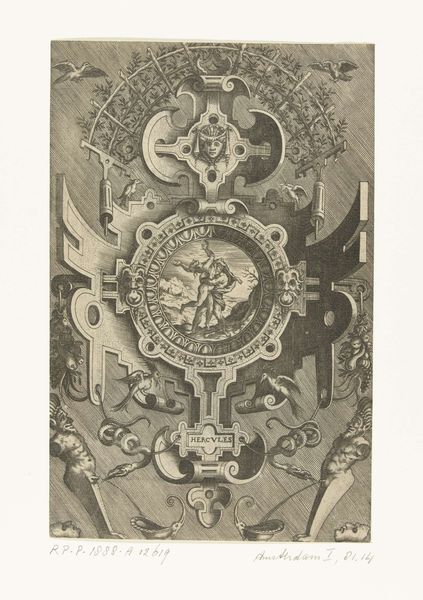
graphic-art, engraving
#
graphic-art
#
pen drawing
#
caricature
#
form
#
11_renaissance
#
geometric
#
line
#
engraving
Dimensions: height 127 mm, width 110 mm
Copyright: Rijks Museum: Open Domain
Editor: This engraving from 1555, "Masker van rolwerk" by Frans Huys, seems incredibly intricate. I’m struck by its somewhat unsettling, mask-like quality; a weird juxtaposition of organic and geometric shapes. How do you interpret this work within its historical context? Curator: This piece offers a window into the complex interplay between art, power, and social control in the 16th century. While seemingly decorative, its grotesque mask and precisely rendered geometric elements point towards anxieties about identity, order, and the "grotesque" as a potential site of resistance against normative ideals. How do you see these elements interacting? Editor: I see the geometric patterns imposing a kind of constraint on the natural forms, but the mask still appears quite fierce. Maybe it suggests that power structures can never entirely contain rebellious spirits or non-conforming identities? Curator: Exactly. This was a time of great upheaval. Religious reformations, emerging mercantile capitalism, and nascent colonial projects all deeply affected how people viewed themselves and others. The mask becomes a powerful symbol of these tensions. Does the idea of a 'mask' resonate with you when considering identity today? Editor: Absolutely, the mask can represent concealment but also the performance of identity, which is definitely something we're still dealing with. I guess I hadn't considered how relevant 16th-century anxieties might be to modern issues of self-presentation and societal control. Curator: It is precisely by understanding those historical roots that we can better grapple with contemporary challenges around representation and identity. The past, after all, speaks to the present in unexpected ways. Editor: This has been a great look at the historical and contemporary importance and context of this piece. Thank you!
Comments
No comments
Be the first to comment and join the conversation on the ultimate creative platform.
